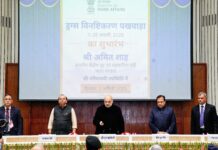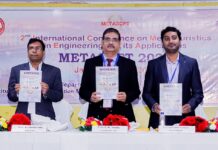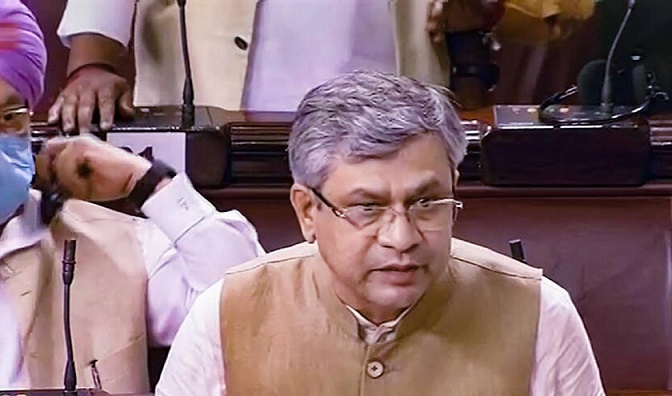By Our Correspondent
NEW DELHI/BHUBANESWAR: Union Minister of Railways, Communications and Electronic & Information Technology, Ashwini Vaishnaw in a written reply to a question in Rajya Sabha on Friday said that the number of passenger fatalities in the consequential train accidents over Indian Railways during the last two years i.e. 2019-20 and 2020-21 is zero.
During the last five years i.e. 2016-17 to 2020-21, the number of consequential train accidents has shown a continuously decreasing trend and the number of accidents has decreased from 104 in the year 2016-17 to 22 in the year 2020-21.
Indian Railways has eliminated all unmanned level crossings on Broad Gauge on 31.01.2019.
Safety is accorded the highest priority by Indian Railways and all possible steps are undertaken on a continuous basis to prevent accidents and to enhance safety of passengers. Following steps/measures have been taken by Government to improve passenger safety:-
Rashtriya Rail Sanraksha Kosh (RRSK) has been introduced in 2017-18 for replacement/renewal/upgradation of critical safety assets, with a corpus of Rs.1 lakh crore for five years, having annual outlay of Rs. 20,000 crore.Electrical/Electronic Interlocking Systems with centralized operation of points and signals have been provided at 6218 stations upto 30.06.2021 to eliminate accident due to human failure.Block Proving Axle Counter (BPAC) to ensure complete arrival of train without manual intervention before granting line clear to the next train have been provided on 5,829 block sections up to 30.06.2021.
Automatic Train Protection (ATP) System to prevent Signal Passing at Danger (SPAD) have been provided at 595 Route Km.
Interlocking of Level Crossing (LC) Gates has been provided at 11723 level Crossing Gates up to 30.06.2021 for enhancing safety at LC gates.All electric locomotives are equipped with Vigilance Control Devices (VCD) to ensure alertness of Loco Pilots.Provision of Retro-reflective sigma boards is done on the mast which is located two OHE masts prior to the signals in electrified territories to warn the crew about signal ahead when visibility is low due to foggy weather.Provision of a GPS based Fog Pass device has been made for locomotive pilots in fog affected areas which enables loco pilot to know the exact distance of the approaching landmarks like signals, level crossing gates etc.Modern track structure consisting of 60kg, 90 Ultimate Tensile Strength (UTS) rails, Prestressed Concrete Sleeper (PSC) Normal/Wide base sleepers with elastic fastening, fanshaped layout turnout on PSC sleepers, Steel Channel/H-beam Sleepers on girder bridges is used, while carrying out primary track renewals.Patrolling of railway tracks is done to look out for weld/rail fractures.Ultrasonic Flaw Detection (USFD) testing of rails is done to detect flaws and timely remove defective rails.
GPS trackers are provided to keyman and patrolmen to monitor their movement and to report any unsafe condition noticed by them instantaneously.Preventive maintenance of the railway assets (Coaches & Wagons) is undertaken to ensure safe train operations and to keep a check on Rail Accidents across the country.Indian Railways has already adopted the Technological upgradation in Safety aspects of coaches and wagons by way of introducing Modified Centre Buffer Couplers, Bogie Mounted Air Brake System (BMBS), improved suspension design and provision of Automatic Fire & smoke detection systems in coaches.Replacement of conventional ICF design coaches with LHB design coaches.
1253 railway stations have been identified for development under Adarsh Station Scheme. Out of these, 1206 railway stations have been developed and the remaining stations are planned to be developed in Financial Year 2021-22, the Minister said.
5374 numbers of stations have waiting rooms/halls over Indian Railways. In rest of the stations seating arrangements are provided in concourse/ticket booking area.Waiting rooms/halls are included in Minimum Essential Amenities, which are ensured at all categories of railway stations except Suburban Stations (SG) and Halt Station-3 (HG-3) stations. Upgradation/modernization of railway stations including waiting rooms/halls on Indian Railways is a continuous and on-going process, however, priority is accorded to higher category of stations over lower category of stations while sanctioning and executing the works depending upon need, volume of passenger traffic and availability of funds, he added.



























